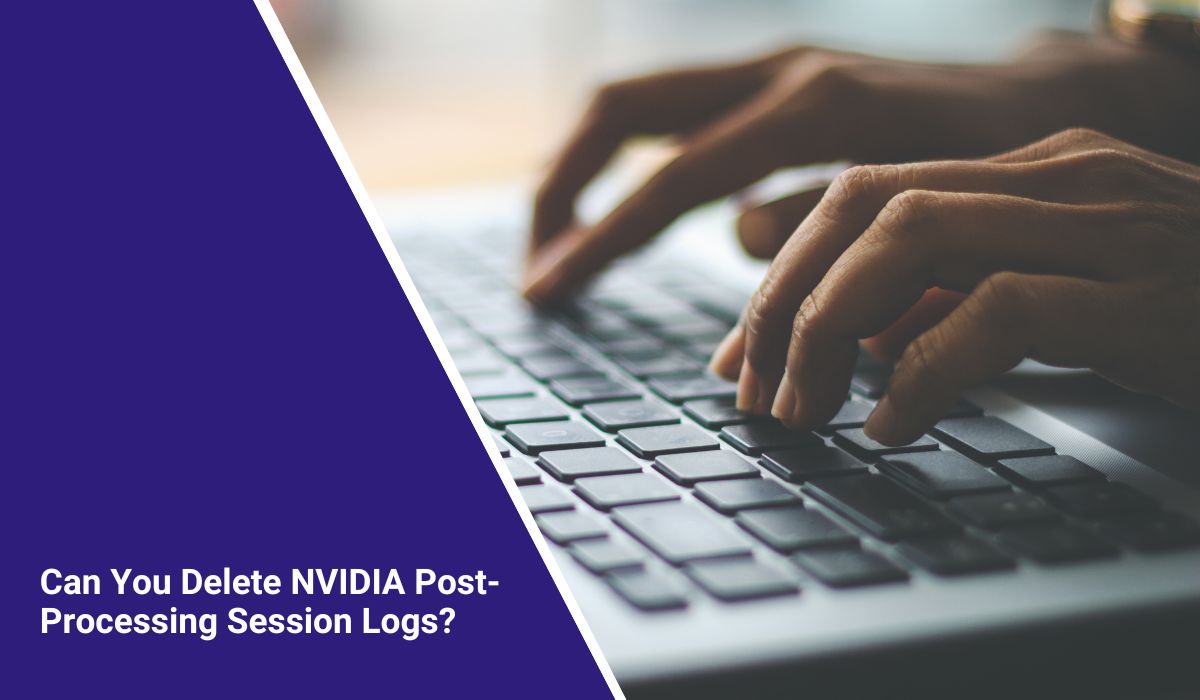Can You Delete NVIDIA Post-Processing Session Logs? Safe to Remove or Not
NVIDIA post-processing session logs are created by tools like Nsight Systems and Nsight Compute after GPU profiling sessions. These logs store processed data such as GPU timelines, CPU utilisation charts, kernel execution summaries, and exported CSV or HTML reports.
They are not part of your active NVIDIA GPU driver or CUDA runtime — they exist only for profiling analysis. Over time, large projects or frequent profiling can cause these logs to consume gigabytes of storage in folders like %LocalAppData%\NVIDIA Corporation\ on Windows or ~/.nsight-systems/ on Linux.
What Does “Post-Processing Session Logs” Mean?

When you record a profiling session in NVIDIA Nsight Systems or Nsight Compute, the raw data is saved in files such as .qdrep, .nsys-rep, or .ncu-rep. After the session finishes, the profiler generates additional processed outputs — this is called post-processing.
These processed files may include:
- Derived performance metrics
- Annotated timelines and event markers
- CUDA kernel analysis summaries
- Memory usage statistics
- Exported CSV, HTML, or JSON reports for offline viewing
These logs are stored locally in either your workspace directory or the default NVIDIA cache paths. They are separate from shader caches like %LocalAppData%\NVIDIA\GLCache, %LocalAppData%\NVIDIA Corporation\NV_Cache, or %LocalAppData%\NVIDIA\DXCache, which are used by games and drivers.
Can You Delete Post-Processing Session Logs NVIDIA?
Yes, you can delete NVIDIA post-processing session logs if you no longer need them for comparison, debugging, or ongoing performance analysis. Removing these logs will not harm your NVIDIA driver installation, CUDA Toolkit, or GeForce Experience features.
However, there are trade-offs. Once deleted, you can’t reopen or reprocess that session inside Nsight Systems or Nsight Compute. If you’re working with NVIDIA developer support or diagnosing GPU performance issues, you should export key reports before clearing them. On shared or CI build systems, deleting old logs can also help maintain privacy and reduce storage use.
How to Delete NVIDIA Post-Processing Session Logs?
If you decide to clear them, make sure Nsight tools are closed first. Then follow these steps:
1. Deleting on Windows
- Close Nsight Systems or Nsight Compute.
- Open File Explorer and go to:
%LocalAppData%\NVIDIA Corporation\Nsight Systems\%LocalAppData%\NVIDIA Corporation\Nsight Compute\
- Delete the
.qdrep,.nsys-rep,.ncu-repfiles and their generated HTML/CSV reports. - Optionally, also clear shader caches if needed:
%LocalAppData%\NVIDIA\GLCache%LocalAppData%\NVIDIA Corporation\NV_Cache%LocalAppData%\NVIDIA\DXCache
- Empty the Recycle Bin to reclaim space.
2. Deleting on Linux
- Close Nsight tools.
- Open a terminal and navigate to:
~/.nsight-systems/~/.nsight-compute/
- Remove the unwanted
.qdrep,.nsys-rep,.ncu-rep, and their related report folders. - Optional: clear shader caches in
~/.nv/and~/.cache/nv/if you want to reset driver-side compiled data. - Use
rmcarefully or move files to a backup folder before full deletion.
Is It Safe to Delete NVIDIA Post-Processing Session Logs?
It’s safe when:
- Logs are from completed profiling sessions.
- No current investigations or NVIDIA support tickets require them.
- You have already exported the important data to a secure location.
It’s not safe when:
- You’re mid-analysis and need to compare with other sessions.
- The files are being actively used by Nsight for ongoing profiling.
Tips for Managing NVIDIA Session Logs
Intro line: NVIDIA session logs can grow quickly, especially in developer or heavy testing setups. With good management, you can keep disk space free and still have the data you need.
- Export important reports to CSV, HTML, or JSON before deletion.
- Keep only the last X number of sessions for each project.
- Use a secondary drive for Nsight output to protect your main system drive.
- Organize logs by project name and date for easier cleanup.
- Automate deletion of logs older than 30 or 60 days using scripts.
- Exclude log folders from your system backups to save space.
- Schedule cache cleanup during low-activity hours on shared servers.
- Use version control (Git, SVN) for important exported profiling data instead of keeping raw session logs.
Conclusion
NVIDIA post-processing session logs are local analysis files created by Nsight Systems and Nsight Compute after profiling. They’re safe to delete when no longer needed, but keep exports if you want future reference. Clearing them regularly can reclaim storage without affecting GPU drivers, CUDA apps, or GeForce Experience. For developers and power users, a retention strategy ensures logs stay useful without taking over your disk.



